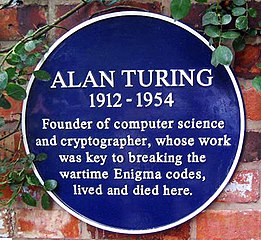
So we’ve finally reached the end of the Elizabethan line. Not the the CrossRail route that straddles London but the seventy year reign of Elizabeth II from 1952 to 2022. Like many, I have mixed feelings about our monarch and monarchy but the history of the last seventy years should fascinate republicans, royalists and anarchists alike. So here are some historical facts about the start of the Elizabethan line for your amusement:
- 🇬🇧 In 1952 Princess Elizabeth Alexandra Mary of York became Queen Elizabeth II en.wikipedia.org/wiki/Elizabeth_II
- 🇪🇺 In 1952 The European Economic Community (EEC), precursor to the European Union (EU), did not exist. That came five years later in 1957, see en.wikipedia.org/wiki/European_Economic_Community
- 🏳️🌈 In 1952 Alan Turing was working on two new areas of research he’d recently pioneered called “Computer Science” and “Artificial Intelligence” (AI). The very same year Turing was prosecuted for being homosexual which was shamefully labelled “gross indecency” and illegal at that time. He tragically committed suicide two years later in 1954 after being chemically castrated by the government of the UK. Her Majesty’s Government was led at the time by some bloke called Winston Churchill, see en.wikipedia.org/wiki/Gross_indecency
- 🇺🇸 In 1952 The England National Football Team were recovering from their debut appearance in a FIFA World Cup two years previously. In a pattern that is now familiar, England failed to make it through to the final stages of the 1950 tournament in Brazil after beating Chile but losing to both Spain and the United States, see en.wikipedia.org/wiki/United_States_v_England_(1950_FIFA_World_Cup)
- 🎼 In 1952 Alan Turing and Christopher Strachey had recently finished experimenting with creating the worlds first computer generated music, to accompany the worlds first computer game (draughts aka checkers), you can listen to the music they made (a tune you may have heard of called God Save The King) on a Ferranti Mark I computer in Manchester at blogs.bl.uk/sound-and-vision/2016/09/restoring-the-first-recording-of-computer-music.html
- ⚛ In 1952, Geneva was selected as the site for the Organisation Européenne pour la Recherche Nucléaire (CERN), the vast network of underground tunnels and machines that can be found there now were just an idea seventy years ago see home.cern/about/who-we-are/our-history
It’s easy to view the events of the 1950s as ancient history and evidence of how far we have travelled down the Elizabethan line. However in 1952, when Elizabeth was 26 years old, her son Charles was 4 years old, Alan Turing was 40 and Winston Churchill was 78. So the history is not that ancient, especially if you’re an octogenarian or a nonagenarian.
Yes it is a long time ago, but it is almost within living memory. Almost.
Mind the Gaps
What a remarkable seventy years of history, so much has happened in a relatively short period of time. At the end of the journey, it feels like there’s a big gap at the end of the Elizabethan line as we search for our connection and onward destination. Not just one gap but lots of gaps:
- The gaps between wealthy elites and everybody else
- The gaps between those educated privately (including the royal family) and the other 93%
- The gaps between London at the rest of the United Kingdom
- The gaps between the UK and the rest of the world
- The gaps between expectations and reality
- The gaps between historical memories and the present day
- The gaps between the Elizabethan line and the Carolean line
I wonder where we will be after another gap of seventy years, if the human race is here at all in the year 2092?
As the station announcers often warn as you disembark on the London Underground, mind the gap.






